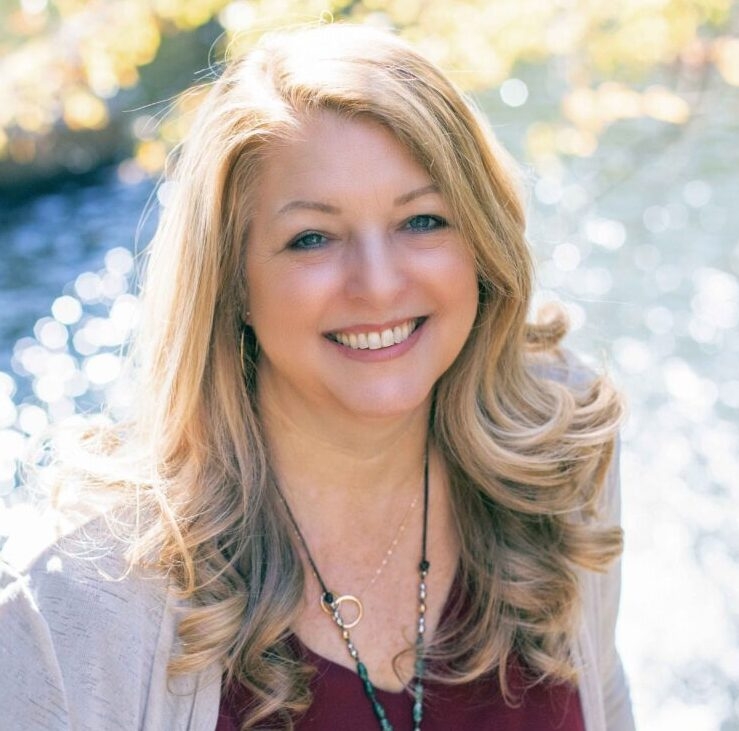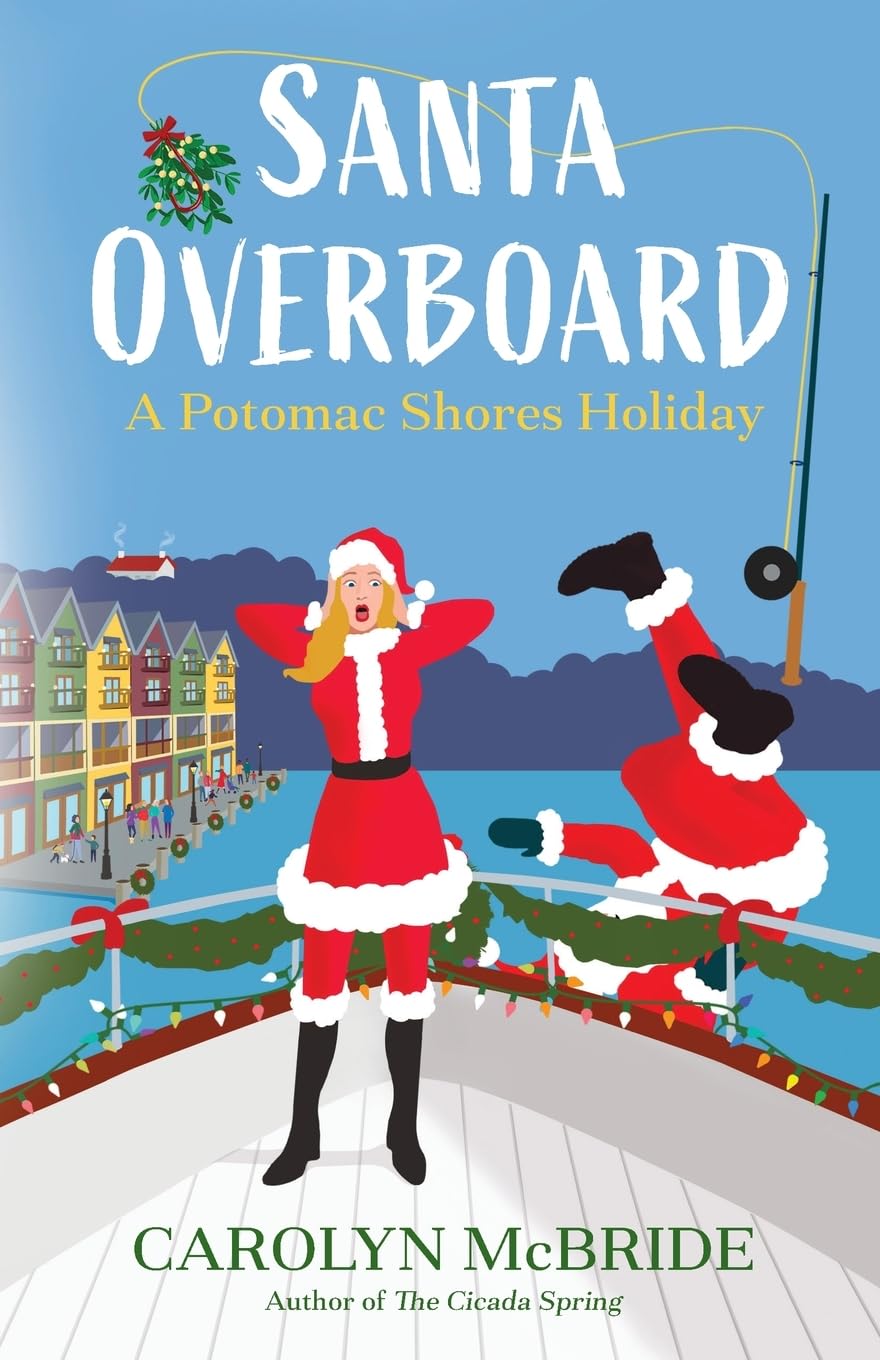 In her holiday blog post, Carolyn McBride shares some family history and a cookbook that inspired her to finish writing her holiday novella, SANTA OVERBOARD, which was published this fall. When Carolyn’s mother passed away in 2019, she became the keeper of the family heirlooms and channeled this transition from daughter to family matriarch into her coming-of-middle-age novel, THE CICADA SPRING. Not surprisingly, some of the treasures she found in her mother’s house guided her in developing her latest tale of a female boat captain restoring her inner compass on a rollicking cruise of second chances.
In her holiday blog post, Carolyn McBride shares some family history and a cookbook that inspired her to finish writing her holiday novella, SANTA OVERBOARD, which was published this fall. When Carolyn’s mother passed away in 2019, she became the keeper of the family heirlooms and channeled this transition from daughter to family matriarch into her coming-of-middle-age novel, THE CICADA SPRING. Not surprisingly, some of the treasures she found in her mother’s house guided her in developing her latest tale of a female boat captain restoring her inner compass on a rollicking cruise of second chances.
When I set out to write SANTA OVERBOARD, I wanted to share some of the holiday traditions in my favorite small town of Occoquan, Virginia, the setting for my Potomac Shores series. In addition, the main character, Katie, and the town’s resident marine scientist, Deke, had developed a friendly attraction in THE CICADA SPRING, but I had left their flirtation unresolved. It started to eat away at me --- so much so that Deke would come to me in my dreams (true story!), asking me to give the couple their own love story. A short romantic comedy seemed like the perfect way to allow Katie to have some fun after the struggles she overcame in the first book.
But it was springtime, and getting in the winter holiday spirit was a challenge. I wrote in fits and starts, constantly asking myself if I should put off this project until it was seasonally appropriate to be writing about Thanksgiving and Christmas. And yet I felt blocked from starting anything different. Then the house began pulling out some holiday magic and putting stories in my path, as if to encourage me to keep going.
Readers of THE CICADA SPRING know that elements of my debut novel are autobiographical. Katie’s experiences in cleaning out her mother’s river house and coming to terms with the loss of her mother became my way of healing from my own life quakes. I wrote about family artifacts I unearthed from my parents’ 70+ years of living, from family quilts to my grandmother’s leather diary from the 1920s. My husband and I live part-time in this house, and as I started writing my holiday story, I discovered I had left a few nooks and crannies unexplored…with their own stories to tell.
One day, as I tried to channel Thanksgiving and Christmas while the tulips bloomed, I procrastinated by researching the age of an old sewing box with the initials SBC for Sarah B. Creller branded into the hand-carved wood. The Crellers settled in Upstate New York during the colonization of America before the Revolutionary War, and Sarah (née White) was my great-great grandmother on my father’s side.
 According to family legend --- meticulously typed and saved in a three-ring binder --- my great-great grandfather, John, first met Sarah in Union Springs in the Finger Lakes. The family record reads, “He was passing along the street on which she lived one winter in 1869 when he spied a woman’s legs sticking out of a snowbank. He pulled the woman out and discovered a charming young lady of nineteen. She had been visiting a neighbor and when running down the path to the street had stubbed her toe on the fence and was thrown forward headfirst into a snowbank. Romance and love followed.” They married about six months later on July 1, 1869. The sewing box was probably a wedding gift, and it still contains pressed flowers, origin unknown.
According to family legend --- meticulously typed and saved in a three-ring binder --- my great-great grandfather, John, first met Sarah in Union Springs in the Finger Lakes. The family record reads, “He was passing along the street on which she lived one winter in 1869 when he spied a woman’s legs sticking out of a snowbank. He pulled the woman out and discovered a charming young lady of nineteen. She had been visiting a neighbor and when running down the path to the street had stubbed her toe on the fence and was thrown forward headfirst into a snowbank. Romance and love followed.” They married about six months later on July 1, 1869. The sewing box was probably a wedding gift, and it still contains pressed flowers, origin unknown.
Love and romance in winter. Keep going, it’s in your blood, the sewing box whispered to me. Not far from the genealogy binder on the same bookcase, I discovered a green, 816-page tome titled THE AMERICAN WOMAN’S COOK BOOK, the Revised Edition from 1947. Weighing almost three pounds, it had been hiding among a lot of other cookbooks, as it may be in your mother’s or grandmother’s kitchen. The first edition was published in 1938 --- one of the first cookbooks with four-color photography --- and there were a number of versions, including the Victory Binding, the Wartime Edition during World War II to help stretch rations. By 1943 it had sold more than a million copies, and it was recently re-released in paperback by Legare Street Press.
I became fascinated with this cookbook, which includes everything from canning tips to a recipe for squirrel casserole. THE AMERICAN WOMAN’S COOK BOOK was edited by Ruth Berolzheimer and published by the Butterick Publishing Company, and it has its roots in a magazine dating to the Reconstruction era after the Civil War.
Remember your mother’s or grandmother’s old sewing patterns? In 1869, Butterick founded one of the earliest magazines for women, The Delineator, to feature those patterns (“delineator” means tailor’s pattern) and in 1928 published THE DELINEATOR COOK BOOK, the precursor to this cookbook. And Ruth herself was a culinary trailblazer, director of the Culinary Arts Institute in Chicago for 11 years. Much like the character Elizabeth Zott in Bonnie Garmus’ LESSONS IN CHEMISTRY, Ruth’s roots were in chemistry too. She graduated with a degree in chemical engineering from the University of Illinois in Champaign in 1908, a time when women were rarely college graduates, let alone scientists.
Cookbooks were often given as wedding gifts, and my mother’s Revised Edition from 1947 was a gift from my father in February 1949: “To my most beloved wife, Marilyn, on our six-month anniversary. Loving you always, Leonard. Honest!! I didn’t get this for you because you couldn’t cook.” More love and romance, and in my mother’s cookbook!
And so SANTA OVERBOARD became an assimilation of the holiday histories, traditions and recipes of family and friends. As Katie says, “I like the Thanksgiving meal to be a hodgepodge of our favorite recipes, not necessarily the traditional ones.” The book includes recipes passed down for generations: Southern cornbread, potato latkes, pumpkin soup with sherry, German pfeffernusse cookies, peppermint-frosted candy cane cookies and cornflake wreaths, a scrumptious and visually beautiful cranberry-spiced martini, with a few squirrels thrown in for entertainment. A little bit of holiday magic can go a long way.


